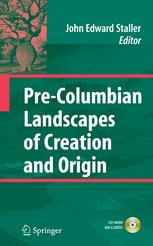

Most ebook files are in PDF format, so you can easily read them using various software such as Foxit Reader or directly on the Google Chrome browser.
Some ebook files are released by publishers in other formats such as .awz, .mobi, .epub, .fb2, etc. You may need to install specific software to read these formats on mobile/PC, such as Calibre.
Please read the tutorial at this link: https://ebookbell.com/faq
We offer FREE conversion to the popular formats you request; however, this may take some time. Therefore, right after payment, please email us, and we will try to provide the service as quickly as possible.
For some exceptional file formats or broken links (if any), please refrain from opening any disputes. Instead, email us first, and we will try to assist within a maximum of 6 hours.
EbookBell Team

5.0
78 reviewsPre-Columbian Landscapes of Creation and Origin
Edited by John Edward Staller, The Field Museum, Chicago, IL
Pre-Columbian Andean and Mesoamerican cultures have inspired a special fascination among historians, anthropologists, archaeologists, as well as the general public. As two of the earliest known and studied civilizations, their origin and creation mythologies hold a special interest. The existing and Pre-Columbian cultures from these regions are particularly known for having a strong connection with the natural landscape, and weaving it into their mythologies. A landscape approach to archaeology in these areas is uniquely useful shedding insight into their cultural beliefs, practices, and values.The ways in which these cultures imbued their landscape with symbolic significance influenced the settlement of the population, the construction of monuments, as well as their rituals and practices.
This edited volume combines research on Pre-Columbian cultures throughout Mesoamerica and South America, examining their constructed monuments and ritual practices. It explores the foundations of these cultures, through both the creation mythologies of ancient societies as well as the tangible results of those beliefs. It offers insight on specific case studies, combining evidence from the archaeological record with sacred texts and ethnohistoric accounts. The patterns developed throughout this work shed insight on the effect that perceived sacredness can have on the development of culture and society.
This comprehensive and much-needed work will be of interest to archaeologists and anthropologists focused on Pre-Columbian studies, as well as those in the fields of cultural or religious studies with a broader geographic focus.